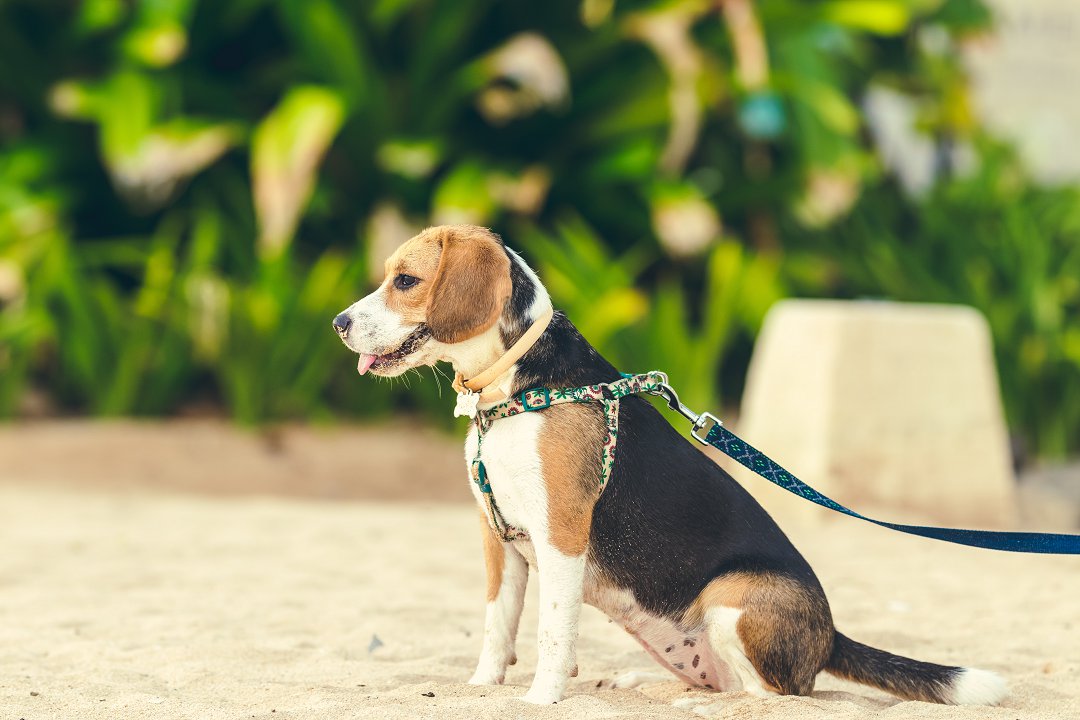Table of Contents
- 1 Introduction: Preparing for Beagle’s TPLO Surgery: What You Need to Know
- 2 Nurturing Your Beagle’s Recovery: Essential Care Tips After TPLO Surgery
- 3 Overcoming Challenges: Supporting Your Beagle’s Rehabilitation Journey Post-TPLO Surgery
- 4 FAQs About: How to Care for Beagle After TPLO Surgery
- 4.1 How soon can my beagle start walking after TPLO surgery?
- 4.2 How can I manage my beagle’s pain after TPLO surgery?
- 4.3 When can my beagle resume regular exercise activities after TPLO surgery?
- 4.4 How should I care for my beagle’s incision after TPLO surgery?
- 4.5 How can I support my beagle’s rehabilitation after TPLO surgery?
- 4.6 How can I manage my beagle’s weight during their recovery from TPLO surgery?
Introduction: Preparing for Beagle’s TPLO Surgery: What You Need to Know
Are you a proud beagle owner who wants to ensure the best care for your furry friend? If your beagle is scheduled for TPLO surgery, it’s essential to be well-prepared for their recovery journey. In this article, we will guide you through the process of caring for your beagle after TPLO surgery, providing you with essential tips and insights.
TPLO surgery, short for Tibial Plateau Leveling Osteotomy, is a common procedure performed to treat cruciate ligament injuries in dogs, including beagles.
This surgical intervention aims to stabilize the knee joint and restore your beagle’s mobility. After the surgery, your beagle will require special care, including post-operative pain management, medication, and physical therapy. We will explore all these aspects and more to ensure a smooth recovery for your beloved beagle. So, let’s dive in and discover how to care for your beagle after TPLO surgery!
Nurturing Your Beagle’s Recovery: Essential Care Tips After TPLO Surgery
After your Beagle undergoes TPLO surgery, it’s important to provide them with the necessary care and support for a smooth recovery. Here are some essential tips to help you navigate this post-operative period:
1. Pain Management and Medication
- Your veterinarian will prescribe pain medication to keep your Beagle comfortable during the recovery process.
- Administer the medication as instructed, and be vigilant in monitoring your dog’s pain levels.
- Keep an eye out for any signs of discomfort, such as whimpering, limping, or restlessness.
2. Incision Care
- Proper incision care is crucial to prevent infection and promote healing.
- Keep the incision site clean and dry, following your veterinarian’s instructions.
- Avoid bathing your Beagle until the incision has fully healed to minimize the risk of infection.
3. Restricted Activity and Exercise
- Your Beagle will need to have restricted activity and exercise for a certain period after TPLO surgery.
- Follow your veterinarian’s guidelines regarding limited movement and avoid activities that could strain the surgical site.
- Short, controlled leash walks can help maintain muscle tone without putting excessive stress on the joint.
4. Physical Therapy and Rehabilitation
- Physical therapy plays a vital role in your Beagle’s recovery, helping to improve mobility and strength.
- Your veterinarian may recommend specific exercises or refer you to a professional canine physical therapist.
- Engage in gentle range-of-motion exercises and controlled movements to aid in your Beagle’s rehabilitation.
5. Weight Management
- Maintaining a healthy weight is crucial for your Beagle’s joint health.
- Consult with your veterinarian about an appropriate diet and portion control to prevent excessive weight gain during the recovery period.
- Obesity can put additional stress on the repaired joint and hinder the healing process.
6. Follow-Up Appointments
- Regular follow-up appointments with your veterinarian are essential to monitor your Beagle’s progress.
- These appointments allow your vet to assess the healing process, make any necessary adjustments to medication or therapy, and address any concerns you may have.
By following these essential care tips, you can ensure a successful recovery for your Beagle after TPLO surgery. Remember to provide pain management, practice proper incision care, restrict activity, engage in physical therapy, manage weight, and attend follow-up appointments. These steps will contribute to your Beagle’s healing and improve their overall mobility and quality of life.
Overcoming Challenges: Supporting Your Beagle’s Rehabilitation Journey Post-TPLO Surgery
After your Beagle undergoes TPLO surgery, their road to recovery is not over. Rehabilitation plays a crucial role in helping your furry friend regain their mobility and strength. Here are some important tips on how to care for your Beagle during their rehabilitation journey:
1. Follow the veterinarian’s instructions
Your veterinarian will provide you with specific guidelines for your Beagle’s post-operative care. It is important to follow these instructions closely to ensure a smooth recovery. These instructions may include medication schedules, exercise restrictions, and incision care.
2. Implement a pain management plan
Pain management is essential to keep your Beagle comfortable during their rehabilitation process. Your veterinarian may prescribe pain medication to help alleviate any discomfort. It is important to administer the medication as directed and monitor your Beagle for any signs of pain or discomfort.
3. Gradually increase exercise and physical therapy
Rehabilitation after TPLO surgery involves gradually increasing exercise and physical therapy. Start with short, controlled walks and gentle range-of-motion exercises. As your Beagle’s strength improves, you can slowly increase the duration and intensity of their exercise routine.
4. Pay attention to incision care
Proper incision care is crucial to prevent infection and promote healing. Keep the incision site clean and dry as per your veterinarian’s instructions. Monitor for any signs of redness, swelling, or discharge, and contact your veterinarian if you notice any abnormalities.
5. Manage your Beagle’s weight
Maintaining a healthy weight is important for your Beagle’s overall well-being and recovery. Excess weight can put additional strain on their joints and hinder their rehabilitation progress. Consult with your veterinarian to develop a weight management plan tailored to your Beagle’s needs.
6. Attend follow-up appointments
Regular follow-up appointments with your veterinarian are essential to monitor your Beagle’s progress and make any necessary adjustments to their rehabilitation plan. These appointments allow your veterinarian to assess your Beagle’s mobility, address any concerns, and provide guidance for continued care.
Supporting your Beagle’s rehabilitation journey post-TPLO surgery requires patience, dedication, and close attention to their needs. By following these tips and working closely with your veterinarian, you can help your Beagle regain their mobility and lead a happy, healthy life.
FAQs About: How to Care for Beagle After TPLO Surgery
How soon can my beagle start walking after TPLO surgery?
- Your beagle should start walking within 24 to 48 hours after TPLO surgery, but it should be limited to short, controlled leash walks to use the bathroom only.
How can I manage my beagle’s pain after TPLO surgery?
- Your veterinarian will prescribe pain medication for your beagle, which should be administered as directed. Additionally, keeping your beagle in a quiet and comfortable environment, providing soft bedding, and minimizing physical activity can help manage their pain.
When can my beagle resume regular exercise activities after TPLO surgery?
- It is crucial to follow your veterinarian’s guidelines for post-operative exercise. Typically, your beagle can gradually increase their activity level after the first few weeks, but high-impact activities and jumping should be avoided for several months.
How should I care for my beagle’s incision after TPLO surgery?
- Keep the incision site clean and dry. Avoid bathing your beagle for the first two weeks after surgery, and prevent them from licking or chewing the incision by using an Elizabethan collar. If you notice any redness, swelling, or discharge, contact your veterinarian.
How can I support my beagle’s rehabilitation after TPLO surgery?
- Physical therapy exercises, such as controlled walking, gentle range-of-motion exercises, and muscle-strengthening activities, can aid in your beagle’s rehabilitation. Consult with a veterinary rehabilitation specialist for a tailored rehabilitation plan.
How can I manage my beagle’s weight during their recovery from TPLO surgery?
- Since excessive weight can strain the healing leg, it is important to monitor your beagle’s weight during their recovery. Follow your veterinarian’s dietary recommendations and consider low-impact exercises, such as swimming, to help maintain a healthy weight.






Leave a Reply